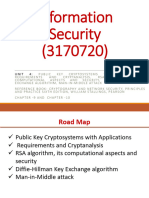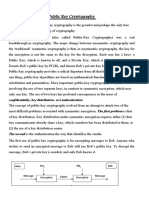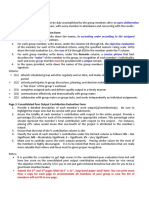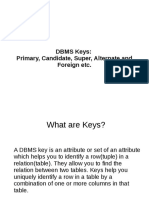0% found this document useful (0 votes)
55 views53 pagesCryptography for IT Professionals
The document discusses public key cryptography and how it uses key pairs with public and private keys. It explains that with public key cryptography, a user encrypts a message with the recipient's public key. The recipient then decrypts it with their private key, allowing secure and authenticated communication.
Uploaded by
Muhammad wazif FakhrullahCopyright
© © All Rights Reserved
We take content rights seriously. If you suspect this is your content, claim it here.
Available Formats
Download as PDF, TXT or read online on Scribd
0% found this document useful (0 votes)
55 views53 pagesCryptography for IT Professionals
The document discusses public key cryptography and how it uses key pairs with public and private keys. It explains that with public key cryptography, a user encrypts a message with the recipient's public key. The recipient then decrypts it with their private key, allowing secure and authenticated communication.
Uploaded by
Muhammad wazif FakhrullahCopyright
© © All Rights Reserved
We take content rights seriously. If you suspect this is your content, claim it here.
Available Formats
Download as PDF, TXT or read online on Scribd
/ 53























































































